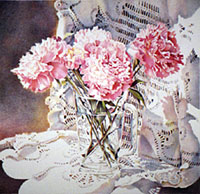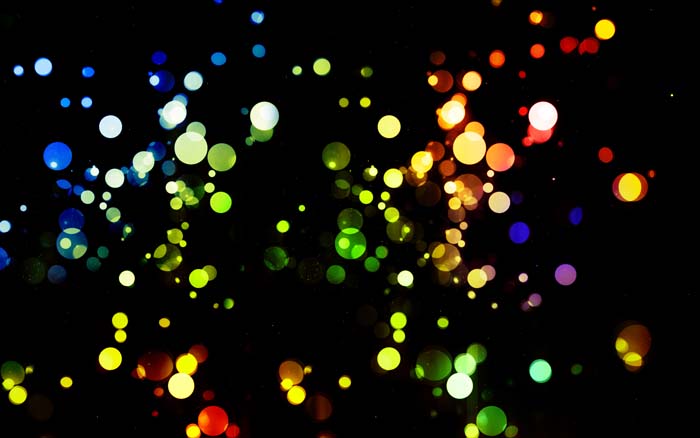Read More
Daily Game Apr 29 - Infinite Tower Defense
Daily Game Apr 29 - Infinite Tower Defense
Color Pencil
from:www.homeschoolarts.com
The "Color Pencil" offers another relatively environmentally safe and convenient media to the parent of the home schooled student or to the artist that likes the portably and ease of use while in the field that the color pencil affords. Clean up is a snap with color pencils and the media lends itself to continued learning and experimentation. Modern color pencils are made with the same fine pigments as artist quality paints and the drawings can last for generations.Creative Coloring
Click on an image for a larger view.
 Pressure Variations
Pressure VariationsVary the pressure on a crayon by pressing hard or lightly to create a deeper or lighter color. Vary the pressure in the same scene to create a sense of depth or distance. Use light pressure to create shadows and heavy pressure to create visual dominance.
 Create Oodles of O's with Upside Down Crayons
Create Oodles of O's with Upside Down CrayonsHold a crayon upside down and roll it between the fingers to make small circles. Use these O shapes to create pictures with the pointillism technique.
 Triple or Double Stripe Designs
Triple or Double Stripe DesignsTape several crayons together to create a multiple point drawing tool. This tool can be used to make stripes or plaids, or multiple lines with an easy stroke. The crayon tips should rest evenly on a flat surface when taping.
 Scribble Designs
Scribble DesignsScribble a design on a piece of paper. Color in each shape with a different colored crayon.
 Outlining
OutliningUse black or dark crayon colors to outline shapes in large murals, child-made big books or wall stories. Outlining the objects makes them easy to see from a distance.
 Create New Colors
Create New ColorsMix new colors by gently overlaying light coats of various crayon colors on white paper. Each time you add a new layer, observe how the color appearance changes.
 Sketch Lines
Sketch LinesUse many loose, overlapping strokes to build up dense, lively-looking shapes.
 Shiny Artwork
Shiny ArtworkFill in all shapes with thick crayon layers, which can be polished to a mellow sheen with a soft cloth.
 Crayon Etching
Crayon EtchingCover a thick layer of crayon with a dense layer of black crayon. Use a paper clip or toothpick to scratch lines through the top layer to reveal colorful layers underneath.
Colored Pencils
 Crayola® colored pencils may be used to draw delicate lines or lay in vibrant, wide, tonal areas. Clean and easily transported, these strong, thick "lead" pencils are ideal for sketching indoors or outdoors.
Crayola® colored pencils may be used to draw delicate lines or lay in vibrant, wide, tonal areas. Clean and easily transported, these strong, thick "lead" pencils are ideal for sketching indoors or outdoors.Watercolor Pencils
 Familiar to users as a drawing tool, versatile Crayola® watercolor pencils produce clean, vibrant lines that blend just like traditional colored pencils. They can be combined with water to create beautiful watercolor effects. Draw on wet paper or dry colored areas to add detail, drama and interest. Unique effects and ease of use make watercolor pencils ideal for any setting.
Familiar to users as a drawing tool, versatile Crayola® watercolor pencils produce clean, vibrant lines that blend just like traditional colored pencils. They can be combined with water to create beautiful watercolor effects. Draw on wet paper or dry colored areas to add detail, drama and interest. Unique effects and ease of use make watercolor pencils ideal for any setting. Fort Meyer Editions Presents Pencil Paintings by:
Fort Meyer Editions Presents Pencil Paintings by:

"Big Foot" 6" x 8" Original Pencil Painting - NFS
This is a portrait of my Mountain Man husband Big Foot. This was a present for him, Christmas of 1980.
By trade he was a master baker. His campfire apple pies were to die for!
"Mule Baby" 5" x 7" Pencil Painting - Not Available
"The Lodge" 8" x 12" Color pencils
"Self Portrait" - 8" x 10" - Pencil Painting - NFS
Painting with Coloured Pencil by barbara newton
 | Step 1. The Line Drawing The first step in creating a new painting is a line drawing that shows placement of objects. A line drawing can be simple outlines of shapes or can be detailed rendering of objects. Then the lines are transferred to paper or board for the final painting. To keep my paper clean, I usually transfer only one area at a time--whichever area I plan to work on next. |
| Step 2. Value Decisions There are many decisions to be made in the creation of a painting - one judgment is about value. To hold the viewer's attention, it is important to have a good range of value. I color the darkest areas first. The lightest value is the white of the paper. With both ends of the value scale established, I can better determine the middle values. |  |
 | Step 3. Underpainting Form and volume of the tablecloth surrounding the main subject is created by applying French Gray in a range of values. Once it is a believable likeness portraying form and volume through value, color will be added. This underpainting or grisaille process separates value decisions from color decisions. |
| Step 4. Add Color to the Foundation Subtle colors reflected upon the tablecloth from the flowers and vase are added. Juxtaposed colors - placing colors next to one another - instead of direct layering adds interest. The holes in the tablecloth and details of the vase are defined and darkened with Indigo Blue and Black. |  |
 | Step 5. The Main Subject The local color of the main subject is pink. The darkest value of the local color - in this case, Black Cherry - is applied to areas where there is an absence of light. The form and volume of the petals is created by applying color to and/or around each individual petal. |
| Step 6. Play Up the Light To allow light to bathe the scene from the left, selected flower petals are left uncolored. The white of the paper represents strong sunlight. Where soft adjustment of previously applied color is needed, the area can be dabbed with reusable adhesive to gently lift color. |  |
 | Step 7. Subtle Adjustments Indigo Blue was added to cool and push back areas that advanced because they were too warm. Complimentary color was added to neutralize both left and right lower corners. | |
 | ||
22" x 23" Colored Pencil
on Rising Museum Board
View more of Barbara's work on her web site at:
www.barbaranewton.net













